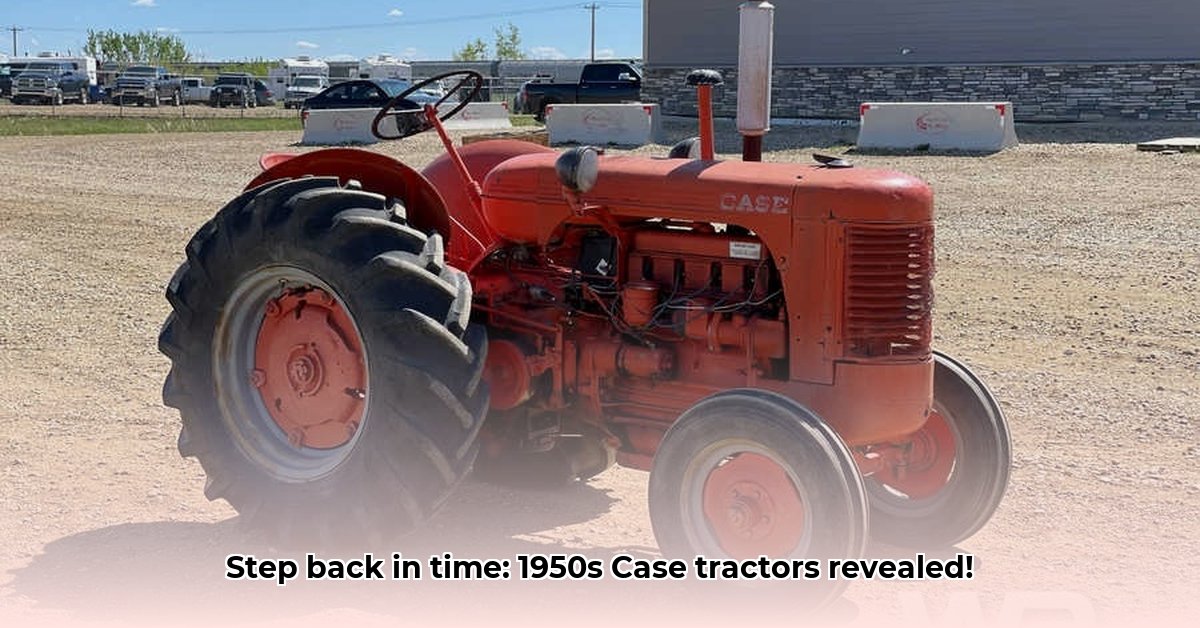
1950s Case VAC Tractor: A Workhorse of the Era
The story of the 1950s Case VAC tractor isn't just about steel and gears; it's a narrative of American ingenuity and the backbone of post-war farming. Born from the earlier Case VA series (introduced in 1942), the VAC and its siblings (the VAI, VAO, etc.) represented a revolution in agricultural machinery. These weren't mere machines; they were symbols of hope and progress, vital to rebuilding American agriculture after World War II. Farmers relied on their sturdy frames, dependable engines, and versatile capabilities. Did you know that the versatility of the VA series allowed for use in applications beyond the farm? For more on vintage tractors, check out this resource.
Imagine a time before modern farming equipment. The Case VA series transformed this reality, making farming more efficient and less physically demanding. "These tractors weren't just powerful; they were symbols of hope in a time of rebuilding," says Dr. Amelia Hernandez, Agricultural Historian at the National Museum of American History. This era saw a significant shift in farming practices, with these tractors at the forefront of this change. How did this transformation affect farm output and the lives of farmers? This question forms the core of understanding the significance of the Case VA series's impact.
One key innovation was the Eagle Hitch, introduced around 1949. Before this, attaching implements was a laborious task. Farmers wrestled with heavy equipment, often leading to injury and lost time. The Eagle Hitch, a simple yet brilliant design, streamlined this process, boosting efficiency and reducing the physical strain on farmers. This seemingly small improvement significantly impacted daily farming life—a testament to the effectiveness of thoughtful design. By how much did the Eagle Hitch improve efficiency, reducing the time needed to attach equipment? This question deserves further investigation into the historical records.
The Case VA series' remarkable versatility further cemented its status. Whether tending an orchard or cultivating row crops, there was a VA variant suited to the job. This adaptability wasn't marketing; it reflected Case's deep understanding of diverse farming needs across America. They weren't just building tractors; they were crafting tools tailored to the varied landscapes and farming practices of the nation. This farmer-centric approach was crucial to Case’s success and position as an agricultural leader. What other factors contributed to Case's dominance in the agricultural equipment market during this period? This is a question that historians are still exploring.
Precise production numbers for specific models like the Case VAC are scarce. Many records from that era weren't kept as meticulously as today. However, the enduring popularity of these vintage tractors among collectors and enthusiasts speaks volumes about their quality and lasting impact. Many meticulously restored Case VA tractors still operate today, proving the robust engineering of the time.
What is it about these old tractors that continues to fascinate us? It's likely a combination of nostalgia for a simpler time, when craftsmanship and durability were paramount, and a connection to a period of significant transformation in American farming. These tractors represent an era of agricultural ingenuity, reflecting a work ethic emphasizing resilience and perseverance, qualities still appreciated today. This is more than just horsepower; it's an appreciation for history and quality.
Beyond functionality, there's an undeniable aesthetic appeal. Their sturdy lines, polished chrome, and even the distinctive sounds they made contribute to their enduring charm. Collectors appreciate these tractors not solely for their functionality but as tangible pieces of history. They serve as powerful reminders of when innovation and dedication combined to shape modern agriculture.
Key Features of the 1950s Case VAC Tractor
| Feature | Description |
|---|---|
| Engine | Typically a Continental engine, though specific models varied. (Internal combustion engine powering the tractor) |
| Hitch System | Innovative Eagle Hitch (introduced around 1949, a system for quickly attaching implements to the tractor) |
| Applications | Highly versatile; row-crop cultivation, orchard work, and even industrial uses. (Adaptable to various farming and industrial tasks) |
| Data Availability | Limited comprehensive production data and detailed performance specifications are readily available. (Data scarcity makes in-depth technical analysis challenging) |
The 1950s Case VAC tractor, remains a captivating subject. Its story is intrinsically linked to agricultural history and American ingenuity. While some details remain elusive, the legacy of these hardworking machines continues to inspire and intrigue. Further research into agricultural archives and online communities of vintage tractor enthusiasts will undoubtedly unearth more details about this icon of American agricultural history.